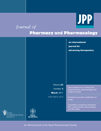The interaction potential of herbal medicinal products: a luminescence-based screening platform assessing effects on cytochrome P450 and its use with devil's claw (Harpagophyti radix) preparations
Abstract
Objectives Potential interactions between herbal medicinal products and the cytochrome (CYP) P450 system are an important safety concern. We set out to develop a screening panel for assessing such interactions and use it to evaluate the interaction potential of devil's claw.
Methods The panel consisted of luminescence-based inhibition assays for CYP1A2, 2C9, 2C19, 2D6 and 3A4, and a reporter gene (luciferase) assay for pregnane X receptor (PXR) activation and CYP3A4 induction. Caftaric acid and chlorogenic acid, two compounds with strong fluorescence quenching properties, were used to demonstrate the assay's resistance to interference. We tested 10 commercial devil's claw preparations as well as harpagoside and harpagide, two important constituents of devil's claw.
Key findings Five preparations were found to weakly inhibit CYP3A4 (IC50 124.2–327.6 µg/ml) and five were found to weakly activate PXR (EC50 10.21–169.3 µg/ml). Harpagoside and harpagide did not inhibit CYP3A4. In agreement with published data, bergamottin, a natural product known to interact with CYP3A4, was shown to inhibit CYP3A4 with an IC50 of 13.63 µm and activate PXR with an EC50 of 6.7 µm.
Conclusions Devil's claw preparations are unlikely to have a clinically relevant effect on CYP function. The assay panel proved effective in screening devil's claw preparations, demonstrating its suitability for use with plant extracts. It showed superior sensitivity and resistance to interference.




